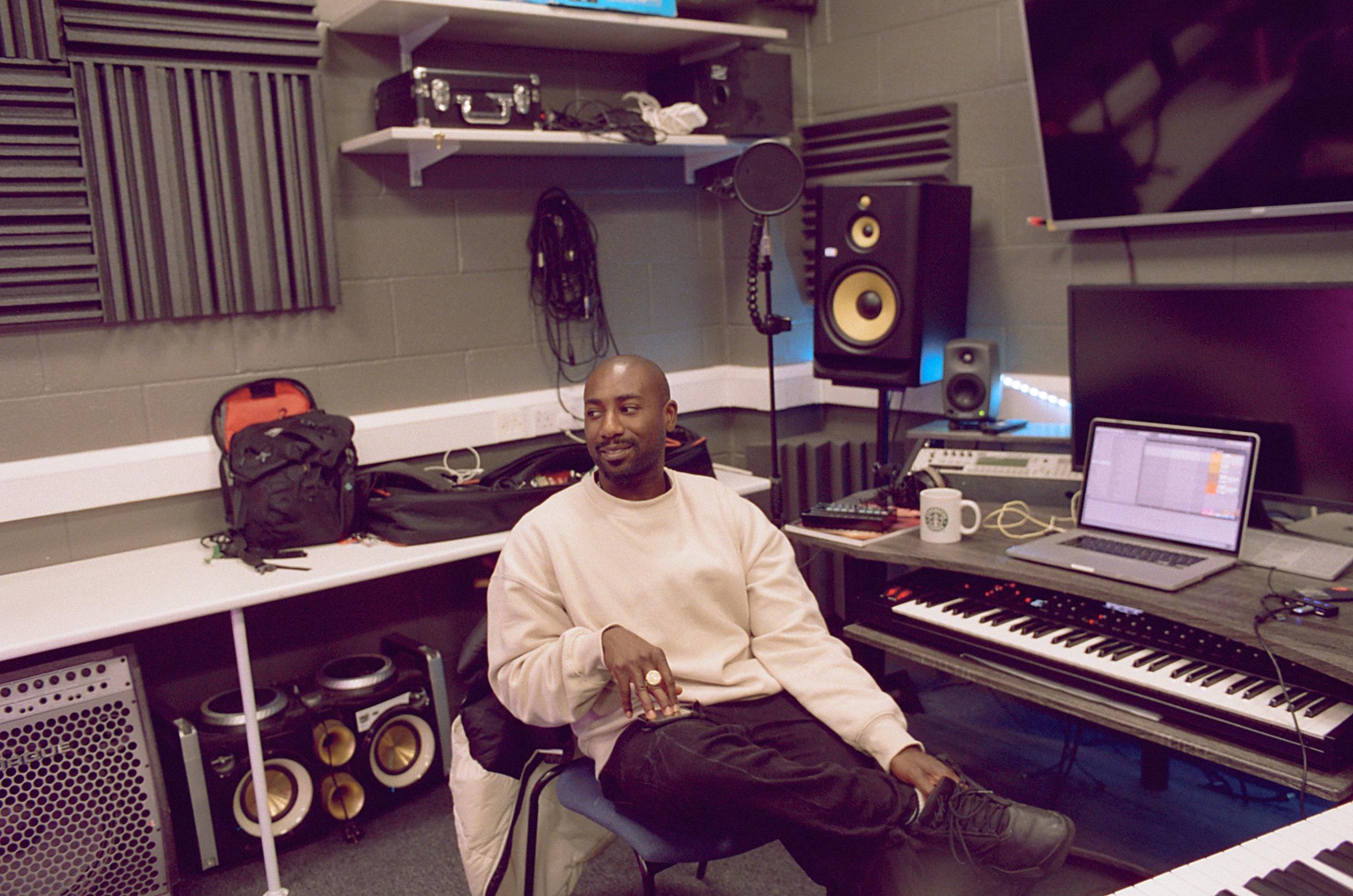Economic growth and poverty
Analysis suggests that without additional actions, economic growth will not be enough to reduce poverty levels.
1. Introduction
A strong economy can increase wages and employment but will not in itself reduce poverty. Analysis suggests that without additional actions, poverty and deep poverty will remain broadly flat between late 2024 and the end of 2028, even if the UK has the highest gross domestic product (GDP) per capita growth in the Group of Seven (G7).
2. Scenarios we are looking at
The 3 main scenarios we have looked at all focus on changes in poverty levels between October 2024 and October 2028, conditional on different growth assumptions. These take the Office for Budget Responsibility’s (OBR) Economic and fiscal outlook forecasts as their inputs wherever possible (see Annex 1 for detailed source notes), varying these to create a central and 2 more positive scenarios.
The main scenarios are:
- Central: this uses OBR’s central forecasts for inflation, earnings, employment and housing costs.
- Strong economy: this uses higher earnings and employment forecasts, and central forecasts for inflation and housing costs.
- Very high employment and growth: this uses the higher earnings growth forecast, with central forecasts for inflation and housing costs, and assumes Labour’s ambition of an 80% working-age employment rate is met in 2028. This scenario is also consistent with UK GDP per capita growth being the highest amongst the G7 nations over the same period, in line with the Government’s primary macroeconomic objective, as is the strong economy scenario.
We have also looked at one more negative scenario:
- Weak economy: this uses a forecast with higher inflation, lower earnings growth, lower employment and higher housing costs compared to the central scenario.
Note that these are modelled conditional scenarios. They present a necessarily simplified view of the future, are heavily reliant on the forecast variables that are entered into the model and are a guide to what might happen in the future without further policy changes, rather than a forecast. We do however believe this work is useful to consider the extent to which growth can tackle poverty and improve living standards, without further policy changes.
3. Economic growth and poverty
Our analysis suggests that without policy changes, poverty (relative poverty, after housing costs using the usual 60% of median income poverty line) is likely to remain largely unaffected by economic growth. In a strong economy with working-age employment at 80%, poverty is likely to drop by only around 100,000 to 200,000 people by 2028 compared to the central scenario, remaining at around 14.5 million in total. Without the significant employment rate boost in the very high employment and growth scenario, a strong economy is even more unlikely to reduce poverty. There is even a risk of a small rise as incomes in the middle continue to pull away from the incomes of people lower down the income distribution, because of the higher contribution of earnings to their incomes (see figure 1).
A similar picture is seen for deep poverty, which uses a poverty line set at 50% of median household income, adjusted for family size and composition. This sees small increases in both the central and high growth scenarios, and poverty unchanged in the very high employment and growth scenario.
Poverty is made up of a higher proportion of pensioners and a lower proportion of working-age individuals in the very high employment and growth scenario compared to the central scenario. This is expected given employment increases predominantly benefit working-age adults. The child poverty picture is similar to the overall poverty picture, with little difference across the scenarios (see figure 2). It is at the highest level in the strong economy scenario.
Behind this broadly static picture across the 3 scenarios are differing distributions of income growth. As expected, there is better income growth in the 2 more positive scenarios. The central and strong economy scenarios both see inequality rising slightly across household income deciles, with higher income deciles mostly seeing higher income growth, albeit the latter sees real income rise significantly across the entire distribution.
Both the weak and the very high employment and growth scenarios show an inequality-lessening trend, with lower deciles seeing higher income growth than higher deciles. The experiences of these 2 scenarios are very different, though: in the weak economy scenario, the top 6 deciles see falling incomes even in cash terms, whereas in the very high employment and growth scenario, all deciles see an average growth rate of over 4% per year (see figure 3).
(Note: Decile 1 is excluded from this chart, as it is strongly affected by the employment part of the forecast, with very large income growth in that decile in the 2 positive scenarios, a similar growth to decile 2 in the central scenario, and a large reduction in income in the weak economy scenario.)
For absolute poverty to fall, it is necessary for incomes in low-income households to grow faster than inflation. The higher the growth, the larger the reduction. In the weak economy scenario, inflation averages 3.8% a year over the period October 2024 to October 2028, so all incomes are falling and we would expect rising absolute poverty. In the other scenarios, inflation averages 1.8%, so we would expect absolute poverty to fall under the very high employment and growth scenario and the strong economy scenario, and possibly to rise slightly under the central scenario.
4. Conclusion
Without a deliberate shift in redistributive policy across housing, wider costs and incomes, business-as-usual economic growth in the UK is likely to benefit higher-income households more than lower-income ones, and the gap between the middle and the bottom – relative poverty – is likely to remain broadly unchanged. This means that while a growing economy will see average incomes and living standards rise, the level of material and social exclusion for those on low incomes compared to everyone else is unlikely to change. Even when accompanied by very high employment, which does benefit lower-income households more, poverty and deep poverty remains broadly flat between October 2024 and October 2028. This analysis therefore shows the need for a specific policy focus on the living standards and economic security of lower-income households if poverty is to be reduced.
Annex: modelling methodology and scenario details
Model
This analysis uses the Institute for Public Policy Research (IPPR) tax and benefit model, version v02_71, which includes the withdrawal of the Winter Fuel Payment from winter 2024 and all other modellable policy changes as at the end of August 2024.
Variability
Modelling these scenarios involved moving people in and out of work on a semi-random basis (by age). The changes to household incomes were therefore influenced by the individual circumstances of the people affected. This meant that over 6 model runs the poverty rate fluctuated by about 200,000 to 300,000 for each scenario. The results presented in this paper take an average of the 6 runs for each scenario.
Economic levers
The modelling makes changes to the following economic indices:
- inflation as measured by the Consumer Prices Index (CPI) (used for benefit uprating and the pension triple lock)
- employment rate
- average weekly earnings (used for projecting wages, self-employment income, the pension triple lock and investment/unearned income).
Housing costs
The modelling looks at mortgage interest, local authority rents, registered social landlord rents and private rented sector rents.
A further economic variable, GDP per capita, is considered in our assessment of the implications for growth for each scenario.
We have taken the forecasts in the OBR’s Economic and fiscal outlook report for March 2024 as the main source of our central, weak and strong economy conditional scenarios, assigning values to each economic variable for each of the 4 scenarios based on the best data sources we could find. A different methodology has been applied to the fourth very high growth economy, where we have looked at what the impact of a working-age employment rate of 80% for working-age adults would be, as well as what would be its implication in terms of GDP per capita growth.
Central scenario
In our central scenario, the variables input into the model are from the following sources:
- CPI inflation: From the OBR’s Detailed Forecast for the Economy: Table 1.7, accompanying their March 2024 Economic and Fiscal Outlook report. By the end of the period, this is at the Bank of England target rate. Over the whole period, prices grow slightly slower under the OBR forecasts than if the median of independent forecasts were used, but slightly faster than an extrapolation of the Bank of England’s August 2024 Monetary Policy Report forecast.
- Employment: From the OBR’s Detailed Forecast for the Economy: Table 1.6, accompanying their March 2024 Economic and Fiscal Outlook report. The associated unemployment rate broadly agrees with the median value of independent forecasters, while the Bank of England forecasts are slightly more pessimistic.
- Earnings growth: From the OBR’s Detailed Forecast for the Economy: Table 1.6, accompanying their March 2024 Economic and Fiscal Outlook report. OBR earnings growth forecasts from this source are somewhat lower than forecasts from independent forecasters.
- Mortgage interest payments growth: From the OBR’s Detailed Forecast for the Economy: Table 1.7, accompanying their March 2024 Economic and Fiscal Outlook report. This shows quite volatile movements in mortgage payments over the period, likely due to the composition of fixed terms in the market, as interest rates change.
- Growth in private rents: From the OBR’s Detailed Forecast for the Economy: Table 1.7, accompanying their March 2024 Economic and Fiscal Outlook report.
- Growth in local authority and Registered Social Landlords (RSL) rents: From OBR’s Detailed Forecast for the Economy: Table 1.19, accompanying their March 2024 Economic and Fiscal Outlook report.
Strong economy scenario
In our strong economy scenario, the variables input into the model are from the following sources:
- CPI inflation: Same as central scenario.
- Employment: This applies the uncertainty around the Bank of England unemployment forecasts to OBR central estimates of unemployment, keeping inactivity rates as at the OBR’s central estimate. We have done this because the OBR does not publish uncertainty levels around this projection. A value has been chosen such that the implied probability of the outturn being lower than this is 80%. Employment reaches 62% of the adult population by October 2028, which is around 0.5ppt higher than its pre-pandemic peak.
- Earnings growth: This is the highest forecast of any of the independent forecasters in the HM Treasury’s August issue of ‘Forecasts for the UK Economy: A Comparison of Independent Forecasts’. Note that the forecaster whose forecast is used for most of the period also predicted high inflation, interest rates and unemployment, which will have affected their earnings forecast. This earnings growth accompanied by high employment and normal levels of CPI and inflation therefore represents strong earnings growth. Annual earnings growth was below the average growth over the forecast period around 80% of quarters between 2008 and 2023.
- Mortgage interest payments growth: Same as central scenario.
- Growth in private rents: Same as central scenario.
- Growth in local authority and RSL rents: Same as central scenario.
Very high employment and growth scenario
In our very high employment and growth scenario, the variables input into the model are from the following sources:
- CPI inflation: Same as central scenario.
- Employment: This assumes that Labour’s 80% working-age employment rate ambition is met in October 2028, with employment increasing linearly over the period from October 2024. Note, this implies an overall employment rate of around 63.6%, 2ppt higher than the pre-pandemic peak.
- Earnings growth: Same as strong economy scenario.
- Mortgage interest payments growth: Same as central scenario.
- Growth in private rents: Same as central scenario.
- Growth in local authority and RSL rents: Same as central scenario.
Weak economy scenario
- CPI inflation: This uses the OBR’s uncertainty estimates for CPI inflation as shown in Chart 2.4 of the OBR’s Economic and Fiscal Outlook for March 2024. A value has been chosen such that the probability of the outturn being lower than this is 80%.
- Employment: This applies the uncertainty around the Bank of England unemployment forecasts to OBR central estimates of unemployment, keeping inactivity rates as at the OBR’s central estimate. A value has been chosen such that the implied probability of the outturn being higher than this is 80%. Employment falls to 58.3% of the adult population by October 2028, similar to levels seen during the Great Recession or during the coronavirus pandemic.
- Earnings growth: We have used a low earnings growth estimate that is the same distance below the central scenario as the high earnings growth scenario is above it. Note that annual earnings growth has been above the average rate over the period for around 80% of quarters between 2008 and 2023.
- Mortgage interest payments growth: We have increased the mortgage interest payments growth in the OBR’s Detailed Forecast for the Economy: Table 1.7 by the difference between the March 2024 Bank Rate forecast and the highest forecast over the period as shown in Chart 2.1 of the OBR’s Economic and Fiscal Outlook for March 2024.
- Growth in private rents: We have increased the private rents growth in the OBR’s Detailed Forecast for the Economy: Table 1.7 by the difference between the central and high inflation rates shown in Chart 2.4 of the OBR’s Economic and Fiscal Outlook for March 2024. A value has been chosen such that the probability of the outturn being lower than this is 80%.
- Growth in local authority and RSL rents: We have increased the social rents growth in OBR’s Detailed Forecast for the Economy: Table 1.19, by the difference between the central and high inflation rate shown in Chart 2.4 of OBR’s Economic and Fiscal Outlook for March 2024. A value has been chosen such that the probability of the outturn being lower than this is 80%.
Annex: real GDP per capita growth
To examine what these scenarios would imply in terms of real GDP per capita growth, we have looked at what the implied growth would be using the employment and earnings growth scenarios, holding the labour share constant as forecast by Table 1.6 of the OBR’s Detailed Forecast for the Economy.
Using OBR forecasts for the GDP deflator, real GDP per capita growth in the central scenario averages 1.4% per year under the central scenario (cumulative growth of 5.6% over the 4 years), 3.6% per year under the strong growth scenario and 4.2% per year in the very high employment and growth scenario. Using International Monetary Fund (IMF) forecasts for the GDP deflator, the highest rates of per capita growth in the G7 over the period will be in the United States (real GDP per capita growth of 1.4% per year, cumulative growth of 5.8%), so either of the stronger growth scenarios would mean the UK’s GDP per capita growth would very likely be the highest in the G7, even if the UK labour share increases as would be more likely in each of these scenarios.

This briefing is part of the work topic.
Find out more about our work in this area.


